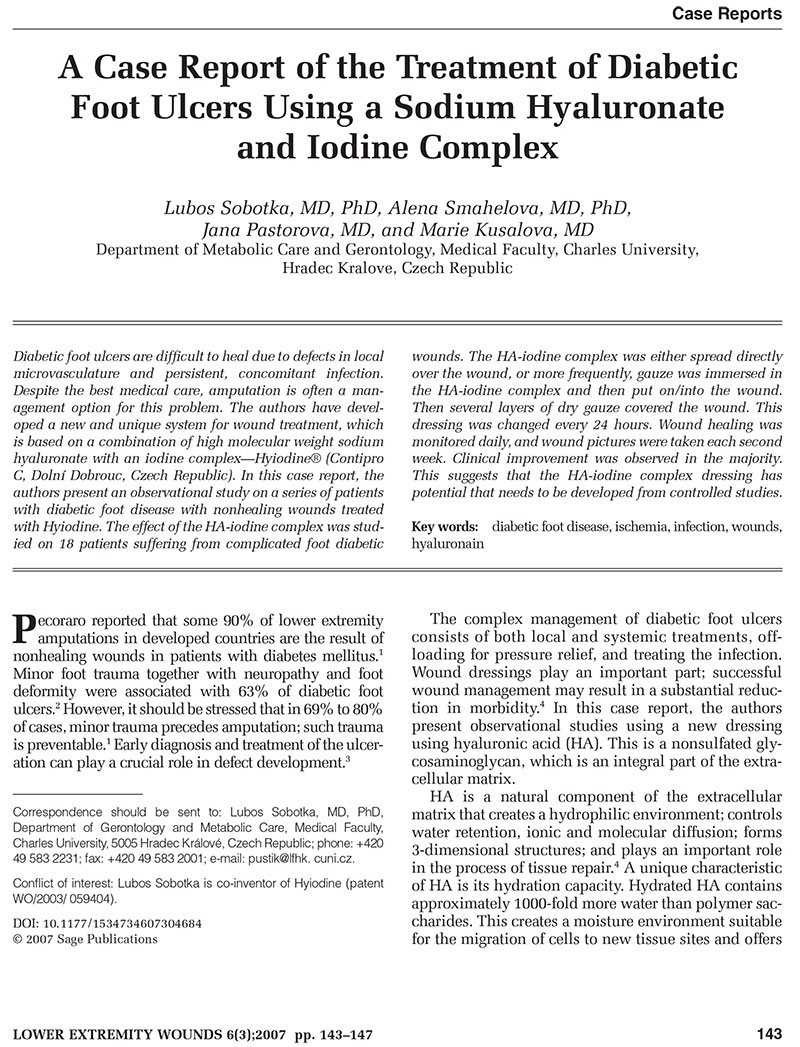HA-iodine complex for Treatment of Diabetic Foot Ulcers

A Case Report of the Treatment of Diabetic Foot Ulcers Using a Sodium Hyaluronate and Iodine Complex
Article specifications
This case report was published in 2007 in American Journal of Clinical Dermatology (IF 2014:0.928) by Czech specialists. The effect of the HA-iodine complex was studied on 18 patients suffering from complicated diabetic wounds localized in the lower extremities. The diabetic wounds were classified mostly as degrees II and III according to the Wagner scale. None of these patients was suitable for intra-arterial angioplasty or surgical revascularization. The HA-iodine (high molecular sodium hyaluronan) complex was either spread directly over the wound, or more frequently, gauze was immersed in the HA-iodine complex and then put on/into the wound. Then several layers of dry gauze covered the wound. This dressing was changed every 24 hours. Patients were treated as in-patients until there was substantial or complete wound healing. All patients had at least 30 weeks’ follow-up from the initiation of treatment. All patients were on bed rest during the hospital stay. Wound healing was monitored daily, and wound pictures were taken each second week. Clinical improvement was observed in the majority.
Results
In this present observational study, we have observed diabetic foot wounds responding to this wound-dressing complex. The patients we treated had difficult-to-heal wounds, 14 patients had complete healing process, 4 patients underwent amputation process and 1 patient is still on the treating process. To the best of our knowledge, this is the first report of the use of a hyaluronan-iodine-iodide complex for wound treatment.
Tags: Czech republic American Journal of Clinical Dermatology Clinical case study 2007
